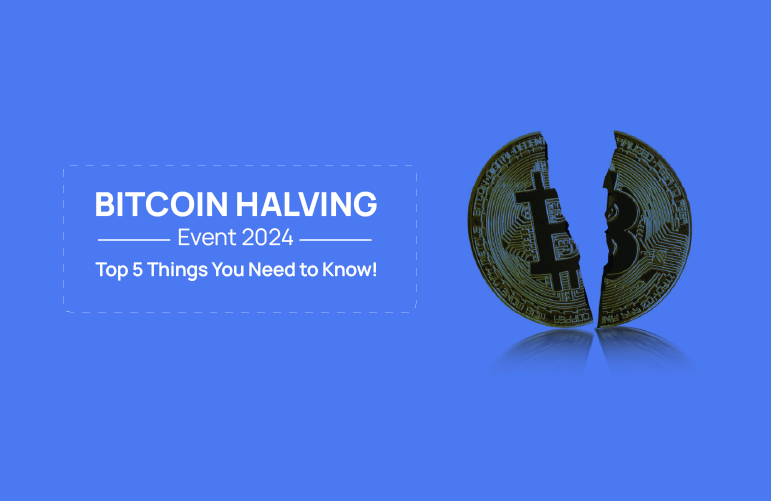What to Expect for Investors and Crypto Markets in the Bitcoin Halving 2024 Among highly awaited events in the crypto space, the Bitcoin halving in April 2024 set one of the major development phases in the life cycle of Bitcoin; this being the fourth block reward reduction from 6.25 BTC to 3.125 BTC, it is but a mere addition to the already wide value proposition that Bitcoin has built on the back of its scarcity. Investors and crypto enthusiasts need to know what it means. Let’s go through some key aspects of the 2024 Bitcoin Halving and its likely impact.
What Is Bitcoin Halving?
Bitcoin Halving is basically hard-wired into the protocol and occurs once every four years, approximately. It happens once per 210,000 blocks. Within it, the rewards given to the Bitcoin miners for block validation are reduced to half. The whole mechanism is putting a lid on the new supply of Bitcoins and enhancing the scarcity factor over time. In 2024, the block reward falls from 6.25 BTC to 3.125 BTC.
By reducing the amount of new Bitcoins coming into the market, the halving is consistent with Bitcoin’s deflationary model, whereby supply is capped at 21 million coins. It is this scarcity that forms the core of Bitcoin’s long-term value proposition and traditionally has been a major catalyst for price appreciation post-halving.
2. Impact on Bitcoin’s Price
Historically, Bitcoin halvings have triggered major price jumps in the months and years following the event. After the 2012 halving, Bitcoin surged from around $12 to $260 within a year, while the 2016 halving saw it meteorically rise from $650 to nearly $20,000 by the end of 2017.
In the case of the May 2020 halving, Bitcoin started at $8,600 and went as high as $64,000 in 2021. Such trends stoke speculation that the 2024 halving might again witness another bull run, though market factors like changes in regulation or economic conditions can impact the magnitude and timing of the rise in prices.
3. Mining and Operational Challenges
Halving, however, is a double-edged sword to miners in that while reduced block rewards mean lower immediate earnings on one hand, on the other hand, it ensures the potential for long-term price increases-incentivizes miners to continue operations. In the face of reduced profitability, many miners are upgrading their hardware to more energy-efficient models and turning to renewable energy sources .
Miners are also increasingly diversifying their revenue streams by expanding into newer blockchain projects or partnering with other venture capital firms in the larger crypto space. This, of course, is due to block rewards falling and pressures mounting to keep profits upwards.
4. Market Sentiment and Volatility
Market sentiment is also generally bullish regarding Bitcoin halving. According to the Stock-to-Flow model, widely followed by the fans of Bitcoin, the asset price should start to rise as the supply of Bitcoin becomes even scarcer. The biggest criticism toward this model, though, is that it fails to consider macroeconomic factors and overall market sentiment.
This work is licensed under a Creative Commons Attribution 4.0 International License.
There might be short-term volatility. History may not repeat itself exactly, but at least in theory, a halving is associated with enormous Bitcoin price swings. The phenomenon may spell turbulence for traders; yet for the long-term investor, these periods do often emerge as the best times to buy Bitcoin cheap.
5. Long-Term Opportunities
These Bitcoin halvings are, for the long-term investor, the perfect time to benefit in the future from appreciation in price: fewer new Bitcoins in circulation, plus increased adoption and institutional investment, mean demand over time will begin to outstrip supply and could lead to substantial price growth.
That would be similar to commodities like gold, whose supply is capped, feeding their value appreciation. That more Bitcoin is out there is welcomed by the masses, but taking into consideration the risks, the long-term outlook many analysts predict to be positive.
Conclusion: Sailing through the Post-Halving Landscape
Therefore, the upcoming halving underlines a need to understand core Bitcoin mechanics. It describes how the crypto market will be shaped in the years to come, with key factors being supply reduction, possible price volatility, and evolving mining operations. This is where investors and traders have to balance short-term risk against the potential for long-term growth in this post-halving environment.
DISCLAIMER : Crypto products and NFTs are unregulated and can be highly risky. There may be no regulatory recourse for any loss from such transactions.

